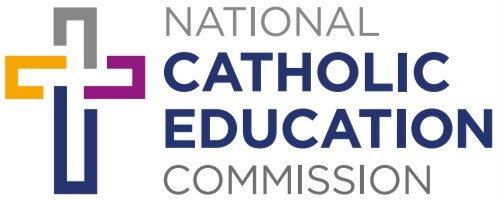The Bible (from Greek, biblia, ‘books’) is the collection of 73 books that the Catholic Church believes and teaches is the written expression of God’s Revelation. These books form a single book which is the inspired word of God.
The Church’s most extensive and authoritative teaching on the Scriptures is found in the Second Vatican Council’s Dogmatic Constitution on Divine Revelation. It often is referred to by its first words in Latin, Dei Verbum (The Word of God), abbreviated below as DV.
The Catechism of the Catholic Church (CCC), 74-141 reiterates the teaching of Dei Verbum. The Compendium of the Catechism of the Catholic Church, 11-24 presents these teachings in concise form.
Divine Revelation
Through Divine Revelation, God chose to show forth and communicate God’s self and the eternal will regarding the salvation God desires for all people. Jesus Christ, in whom the full revelation of God is brought to completion, commissioned the Apostles to preach the Gospel to all people.
The apostles transmitted all they received from Christ and learned from the Holy Spirit to their successors, the bishops, and through them to all generations until the end of the world. This is the Apostolic Tradition, the transmission of the message of Christ, brought about from the very beginnings of Christianity by means of preaching, witness, institutions, worship, and inspired writings.
Apostolic Tradition occurs in two ways: through the living transmission of the word of God (also simply called Tradition) and through Sacred Scripture which is the same proclamation of salvation in written form (CCC 74-78).
Scripture and Tradition
This is the inter-relationship between the Bible and the handing on (Latin, traditio) of faith in the Church. Dei Verbum brought the to two together. The Scriptures, together with Tradition are the supreme rule of faith (DV, n. 21). They flow out of the same divine wellspring and together make up one sacred deposit of faith from which the Church derives her certainty about revelation. The Scriptures are a product of, and witness to, the living tradition in its early stages; and the living tradition of the Church faithfully passes on the word of God.
The authentic interpretation of the deposit of faith has been entrusted to the living teaching office of the Church. This is Magisterium. It is not superior to the Word of God but is its servant. It teaches only what has been handed on to it. With the help of the Holy Spirit, it listens to this devotedly, guards it with dedication and expounds it faithfully.
Scripture, Tradition, and the Magisterium are so closely united with each other that one of them cannot stand without the others. Working together, each in its own way, under the action of the one Holy Spirit, they all contribute effectively to the salvation of people (CCC 80-87).
The Inspiration and Truth of Sacred Scripture
God is the author of Sacred Scripture. Sacred Scripture have been written under the inspiration of the Holy Spirit:
For Holy Mother Church, relying on the faith of the apostolic age, accepts as sacred and canonical the books of the Old and the New Testaments, whole and entire, with all their parts, on the grounds that, written under the inspiration of the Holy Spirit, they have God as their author, and have been handed on as such to the Church herself
DV, 11
Because it is divinely inspired, God’s word is free from error. DV n. 11 consciously avoided any fundamentalist interpretation of freedom from error by stating that the sacred books “firmly, faithfully, and without error teach that truth which God wanted put in the sacred writings for the sake of salvation”. By inference, metaphorical language, ancient cosmology and culturally conditioned worldviews are not ‘for the sake of salvation’.
The Interpretation of Scripture
To interpret Scripture correctly, the reader must be attentive to what the human authors truly wanted to affirm, and to what God wanted to reveal to us by their words, in particular through attention to literary forms and circumstances of time and culture.
But since Sacred Scripture is inspired, there is another and no less important principle of correct interpretation, without which Scripture would remain a dead letter. “Sacred Scripture must be read and interpreted in the light of the same Spirit by whom it was written” (DV n. 12, CCC, 111)
(See Catholic Biblical Interpretation for fuller details on these principles.)
The Senses of Scripture
The literal sense of Scripture is the meaning that emerges from the biblical words themselves in their literary and historical context. It is the sense that the author intended. Attention to the literal sense (or the literary sense) has nothing to do with the naïve literalism of biblical fundamentalism, since the literal sense can be metaphorical or mythic, and proper attention to literary form is a prime criterion for finding the literal sense.
In Church tradition the literary is often distinguished from the spiritual sense. The spiritual sense of Scripture refers to meaning and interpretation beyond what the author intended. It is the sense expressed by the text when read under the influence of the Holy Spirit in light of the life, death and resurrection of Jesus. One example is the way Christians can see the passion of Jesus in Isaiah’s fourth song of the suffering servant (Is 52:13 – 53:12), which is the first reading in the Commemoration of the Passion of the Lord on Good Friday.
The Canon of Scripture
By apostolic Tradition the Church discerned which books are regarded as the inspired word of God. This complete list is called the canon, meaning the standard or rule. The canon accepted by the Catholic and Orthodox Churches includes some books and parts of books not accepted as inspired by most Protestant Churches.
The Catholic canon of Scripture has 46 books for the Old Testament (45 if we count Jeremiah and Lamentations as one) and 27 books for the New Testament.
See Scripture in Religious Education: Catholic Editions of the Bible
The Old Testament
Christians venerate the Old Testament as the true word of God. It is an indispensable part of Sacred Scripture. While the Church reads it with a Christian understanding as prefiguring of the New Testament, these Hebrew Scriptures have their own content, their own context and their own integrity. The name ‘Old Testament’ does not mean it has been superseded or become outdated. Its books are divinely inspired and retain a permanent value, for the Old Covenant has never been revoked.
The New Testament
The New Testament, whose central object is Jesus Christ, conveys the ultimate truth of divine Revelation. Within the New Testament the four Gospels of Mathew, Mark, Luke and John are the heart of all the Scriptures because they are the principal witness to the life and teaching of Jesus. As such, they hold a unique place in the Church.
The Unity of the Old and New Testaments
Scripture is one because the Word of God is one. God’s plan of salvation is one, and the divine inspiration of both Testaments is one. The Old Testament prepares for the New and the New Testament fulfils the Old; both shed light on each other (Compendium, 20-23).
Sacred Scripture in the Life of The Church

“Your word is a lamp to my feet and a light to my path” (Ps 119:105).
Scripture is central to the life of the Church:
The Church has always venerated the divine Scriptures just as she venerates the body of the Lord, since, especially in the sacred liturgy, she unceasingly receives and offers to the faithful the bread of life from the table both of God’s word and of Christ’s body. She has always maintained them, and continues to do so, together with sacred tradition, as the supreme rule of faith
DV,21
Sacred Scripture gives support and vigour to the life of the Church. It is a confirmation of the faith, food for the soul and the fount of the spiritual life.
The Liturgy of the Word has a pre-eminent place of the Celebration of the Eucharist; The Bible is proclaimed in a three-year cycle of Sunday readings; the liturgical homily breaks open the word of God; Scripture readings are a key part of the proper celebration of all the sacraments; formal public prayer is preferably built around the Scriptures.
The first ministry of bishops, priests and deacons is to be ministers of the word.
Scripture is central to pastoral preaching, catechesis and religious education.
Theology rests on the written word of God, together with tradition, as its primary and perpetual foundation.
DV n. 23 encouraged biblical scholars “to continue energetically, following the mind of the Church, with the work they have so well begun”.
The prayerful sacred reading of the Scriptures – lectio divina – is becoming widespread.
Following DV’s call for all believers to read the Bible regularly – because “ignorance of the Scriptures is ignorance of Christ” (Saint Jerome) – there are many Bible study groups in parishes and faith communities today. Many lay people are undertaking formal theology courses built around Scripture.
